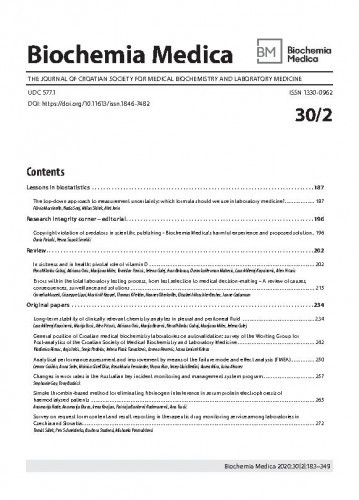This case report describes occurrence of unusual, dark brown coloration of citrate plasma and serum samples in a female 68 years old patient admittedinto Emergency department (ED).Patient complained of nausea and vomiting, fever up to 38.9°C, colicky pain in abdomen, diminished urinary output and yellowish skin tone. Hermedical history included arterial hypertension, hypothyroidism and facial squamous cell carcinoma. For previous two years, she was treated withtuberculostatic therapy for Mycobacterium avium positive interstitial lung disease. Regular follow-up showed no signs of active disease. Upon admissionto ED, complete blood count (CBC) analysis showed low red blood count (RBC) (3.76 x1012/L (reference interval (RI) 3.86 – 5.08 x1012/L)), lowhaemoglobin (Hb) concentration (111 g/L (RI 119 - 157 g/L)) and low haematocrit (Hct) (0.310 L/L (RI 0.360 – 0.470 L/L)). Biochemistry analytes werehigh, with foremost lactate dehydrogenase (LD) activity (2900 U/L, RI <240 U/L). After communication with the clinician, methaemoglobin measuredin arterial blood gas sample was reported. Patient was admitted to the Intensive care unit and upon reflex testing of haptoglobin, intravascularhaemolysis was confirmed. This case indicates that every case of brown coloration of the serum must be promptly communicated to the clinician.Reflex testing assured timely diagnosis and favourable patient outcome.
Sažetak

 Biochemia medica : the journal of Croatian Society for Medical Biochemistry and Laboratory Medicine : 30,2(2020) / glavna i odgovorna urednica Daria Pašalić.
Biochemia medica : the journal of Croatian Society for Medical Biochemistry and Laboratory Medicine : 30,2(2020) / glavna i odgovorna urednica Daria Pašalić.